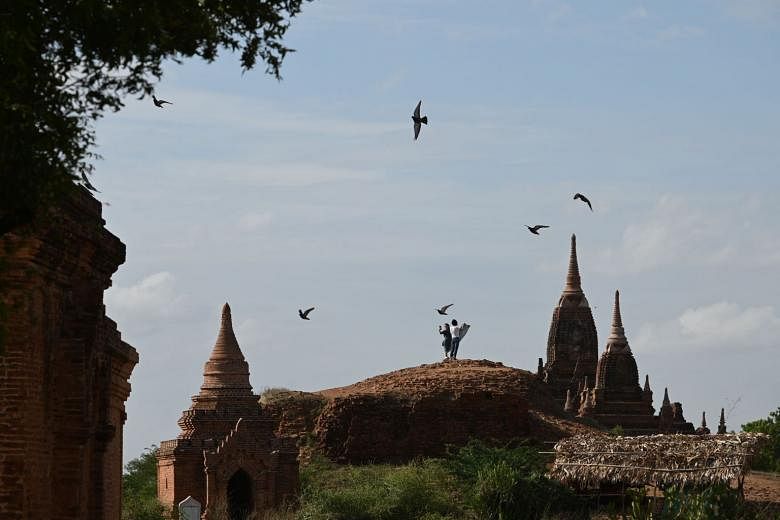YANGON (REUTERS, DPA) - Unesco inscribed Myanmar's ancient capital of Bagan as a World Heritage Site on Saturday (July 6), nearly a quarter of a century after the complex of Buddhist temples was first nominated for listing.
India's "Pink City" of Jaipur, the ruins Liangzhu City in China, and the Plain of Jars located in central Laos were also given World Heritage status.
The Bagan decision recognises the importance of the central Myanmar site - which includes more than 3,500 stupas, temples, monasteries and other structures built between the 11th and 13th centuries - and will likely be a boon to Myanmar's tourist industry.
The Myanmar proposal to list the site was approved at a meeting of the UN's cultural body in Baku, Azerbaijan.
The International Council on Monuments and Sites recommended the listing, noting that Myanmar had adopted a new heritage law and had formed plans to reduce the impact of hotels and tourism developments around the temple.
Myanmar had reversed some "inappropriate conservation interventions," the body said, noting that Bagan was important for its historical significance and as a place of continuing Buddhist worship.
Bagan was first nominated as a World Heritage Site in 1995, but the military junta that ruled the country at the time was accused of ignoring experts' advice on restoration efforts and the nomination was rejected.
Earthquakes have also damaged the ancient structures, most recently in 2016 when nearly 200 temples were damaged by a 6.8 magnitude quake.
Myanmar has renewed efforts to list the site since a transition from military rule began in 2011.
"Bagan is living heritage, having endured all forms of challenges for more than a thousand years," said Myanmar diplomat Kyaw Zeya, speaking on behalf of the Myanmar delegation at the Baku meeting.
"Today, we are celebrating the joyous moment of the successful inscription of Bagan in the World Heritage List.
Afterwards we will continue our efforts on conservation and management of Bagan so that this treasured heritage will remain for another thousand years."
SUCCESS FOR INDIA, INDONESIA, JAPAN
The fortified commercial city of Jaipur was founded in the 18th century by Sawai Jai Singh II. It is built according to a grid plan and the Old City is painted uniformly in a distinctive terracotta hue.
Unesco also agreed in its morning session to add Bahrain's Dilmun Burial Mounds, the Budj Bim wetlands landscape formed by Australia's aboriginal Gunditjmara nation, the Mozu-Furuichi mounded tombs of Japan, and the Dutch-colonial era Ombilin coal mining heritage of Indonesian Sumatra.
Later on Saturday, the body recognised the Ore Mountains, which join the German region of Saxony with the Czech area of Bohemia, as a World Heritage site, along with the Roman-built water management system of the Bavarian city of Augsburg, and Poland's Krzemionki prehistoric flint mines.
Saxony premier Michael Kretschmer gave his thanks for the recognition, labelling the project an example for international cooperation.
The UN Committee in Baku is voting on a total of 36 applications.
The gathering will last until 10 July.
Currently, there are more than 1,000 cultural and natural sites from 167 countries on the list.
On Friday, five sites including the ancient Iraqi city of Babylon, were also added to the list.

